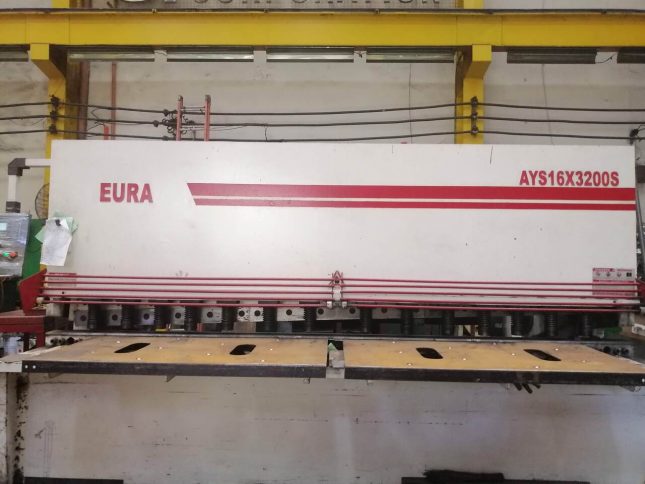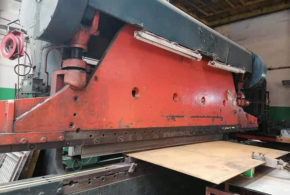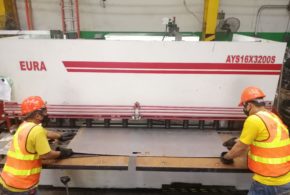

When you need a metal item cut to a specific size, there are a variety of fabrication processes to choose from. Most people find themselves having difficulties choosing between two popular methods. Today, we take a look at plasma cutting vs oxy-acetylene cutting.
Those who are unfamiliar with CNC cutting services in the Philippines might find the comparison complex. Both procedures can achieve the job of cutting. However, each one has features that has an advantage over the other. Continue reading to learn more about these differences.
Plasma is created by introducing electricity to compressed air. This creates an ionized plasma gas. Once air pressure forces the plasma gas through a nozzle, it creates a concise and constricted flow. The more electricity, the hotter the plasma arc becomes. This is where the heat source of plasma cutting comes from.
With oxy-acetylene cutting, combustion of fuel gases heats the metal to its ignition temperature. When the oxygen jet is directed at the metal in a high-pressure stream, it creates a chemical reaction to create iron oxide known as slag. Afterward, the
oxygen stream moves at a constant speed and forms a continuous cut.

Given the constant supply of combustible gas and oxygen, oxy-acetylene cutting can create a powerful flame that can cut even through thick metals. State-of-the-art oxy-acetylene machinery can be used for metals that are up to 24 inches thick.
On the other hand, plasma cutting might not be able to work through thicker metals with much success. This process is typically more efficient for thin pieces of metal because a computer-controlled plasma cutter can only slice metals that are up to 6 inches.
When it comes to safety, oxy-acetylene cutting is at a disadvantage for two reasons: It requires a fuel gas and utilizes open flame. The highly flammable nature of gas means practicing extra caution is critical to avoid potential fire hazards.
Plasma cutting does not require fuel gas to work. Instead, it uses electricity and compressed air. The procedure is relatively safer because the plasma arc shuts off as the torch is removed from the metal. Once the oxy-acetylene torch is lit, the open flame will remain until the gas regulator is adjusted.
However, plasma cutting has its fair share of safety hazards as well. The plasma arc is quite hot. At a minimum, fabricators must remain attentive while the cutting is ongoing and wear the right protective gear.

Now more than ever is the time for industrial companies to compete on product quality. Oftentimes, this factor is what drives the decision when choosing a metal fabrication procedure.
When it comes to speed and precision, plasma cutting holds the edge. The constricted heat of plasma jets and increased speed at which plasma cuts through metal allows for smooth and precise results. Simply put, plasma cutting would be the best option for applications that value accuracy.
For example, the construction industry which uses different dimensions of structural steel will highly benefit from plasma cutting. Anything less than precise for construction materials can compromise the structural integrity of buildings.
As for oxy-acetylene cutting, it is difficult to make precise lines because the torch gives off excessive heat. The drawback of its extreme power is distorted lines. The metal item produced will typically require more cleanup.
A factor that impacts cut quality is the size of the heat-affected zone (HAZ). Oxy-acetylene cutting has a larger HAZ than plasma cutting. For this reason, it changes the chemical structure of metals and the metal edges end up being warped.
It is also worth noting that plasma cutting machinery does not need to be preheated to work. One can instantly produce numerous pieces of precise metals with this procedure.
For consumer goods industries that require high volumes of uniform metal items, plasma cutting would be ideal. This procedure can be used to create buckets, funnels, storage tanks, carts, trolleys, and the like.

Oxy-acetylene cutting is not only useful for cutting itself. It has various other applications such as welding, brazing, soldering, going, and bending. This makes it a smart investment for industries that need metal items with various designs.
With plasma cutting, it is the optimal choice for cutting different types of metal. Ferrous metals such as aluminum, steel, and stainless steel can be cut with plasma cutting. Moreover, it can also handle metals in any condition — even rusted or painted. It can be a major downside for oxy-acetylene cutting because it is not suitable for non-ferrous metals.
These are the things you need to know about plasma cutting vs oxy-acetylene cutting. Both processes are well-established for cutting metals. However, each has its own advantages and shortcomings. Deciding which method industries should use will depend on individual business needs.
At Astron Metal Works, we offer both plasma cutting and oxy-acetylene cutting services. We have invested in state-of-the-art machinery to ensure your needs are catered to. Rest assured that your project can be achieved with efficiency in mind.

What are the benefits of quality control in metal fabrication? Enhances safety Cost savings Compliance with industry standards Boosts customer loyalty When sourcing for an industrial fabricator in the Philippines, it’s crucial to choose one that has an in-house quality control procedure. In the metal fabrication and manufacturing industry alike, quality control is defined as […]

What are the techniques used in sheet metal fabrication? Shearing Cutting Bending Punching Assembling Sheet metal fabrication is defined as the manufacturing process of shaping sheet metal according to functional needs. Sheet metal is one of the most ideal materials for a wide array of industries because it is lightweight and immensely ductile. The techniques […]

What are the uses of CNC cutting services in the Philippines? Construction materials Food production items Metal furniture Gas station fixtures CNC cutting refers to the metal fabrication procedure that involves using computer numerical control routers with the advantage of versatility and flexibility being derived from automation. The computerized routers are adept in cutting […]

What are the uses of sheet metal fabrication? Construction Petroleum Industrial Industries Sheet metal refers to metal formed into thin sheets, typically by hammering or rolling. It is highly durable and able to maintain its structural integrity, making it easy to work as it can be bent, stamped, cut, dished, and punched. Sheet metal fabrication […]